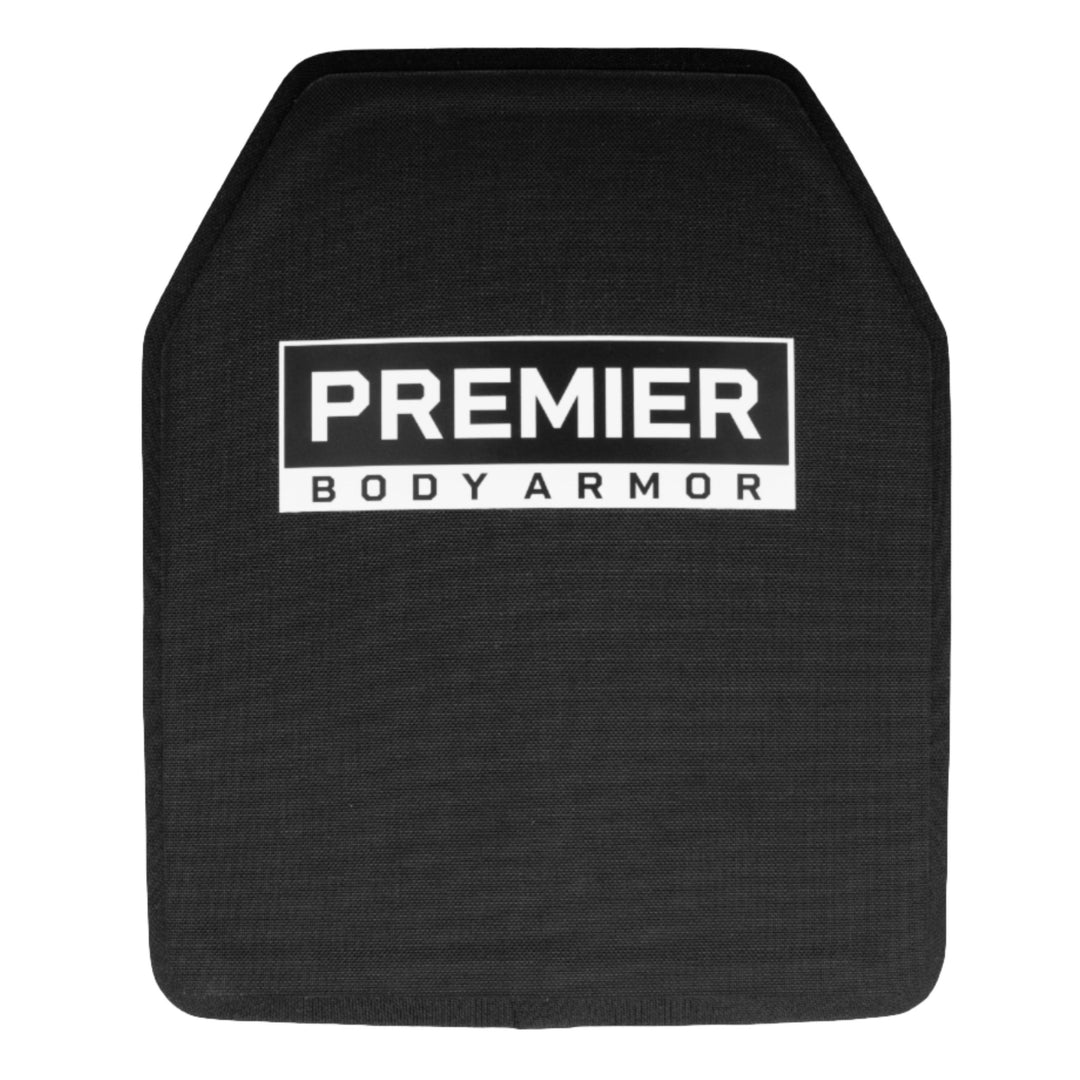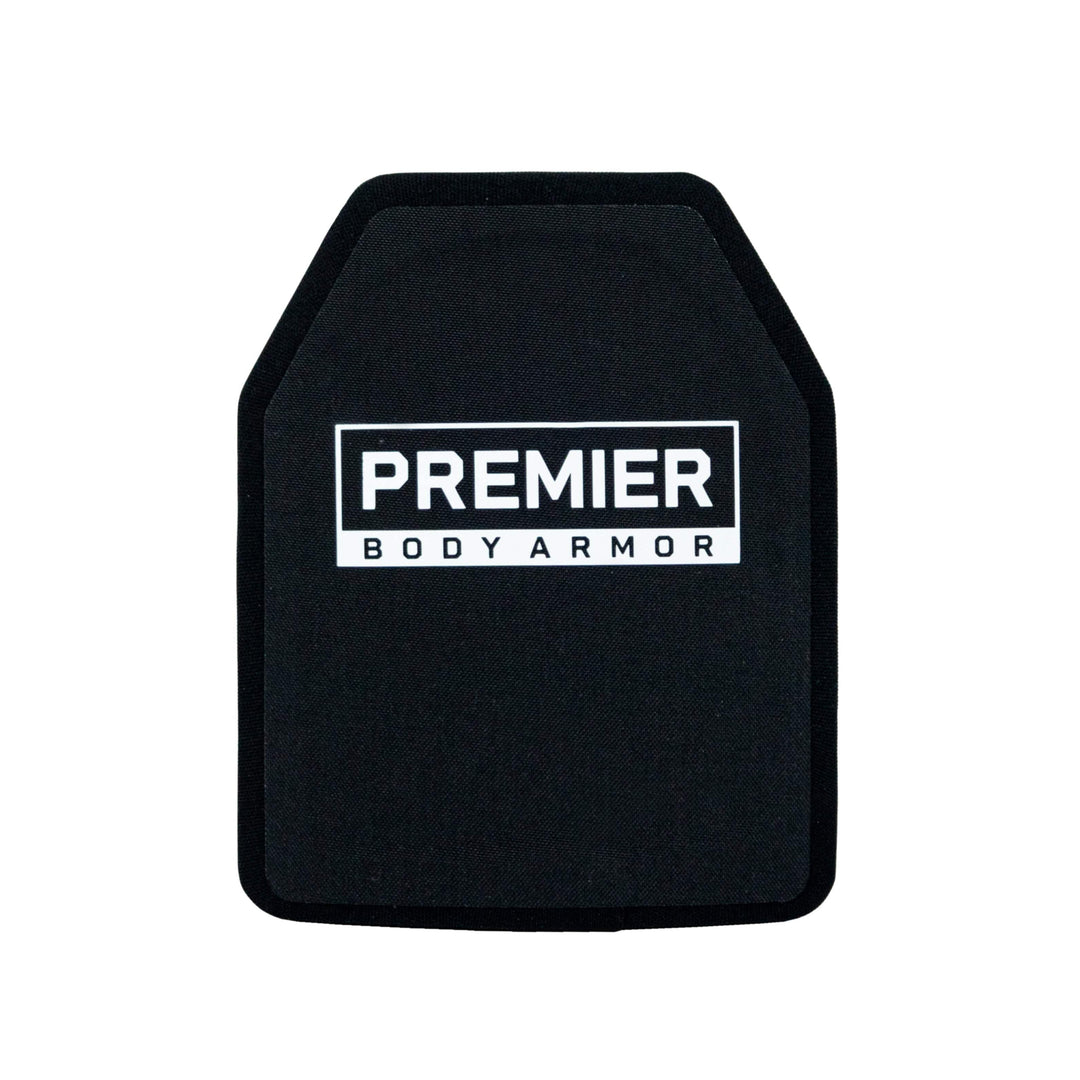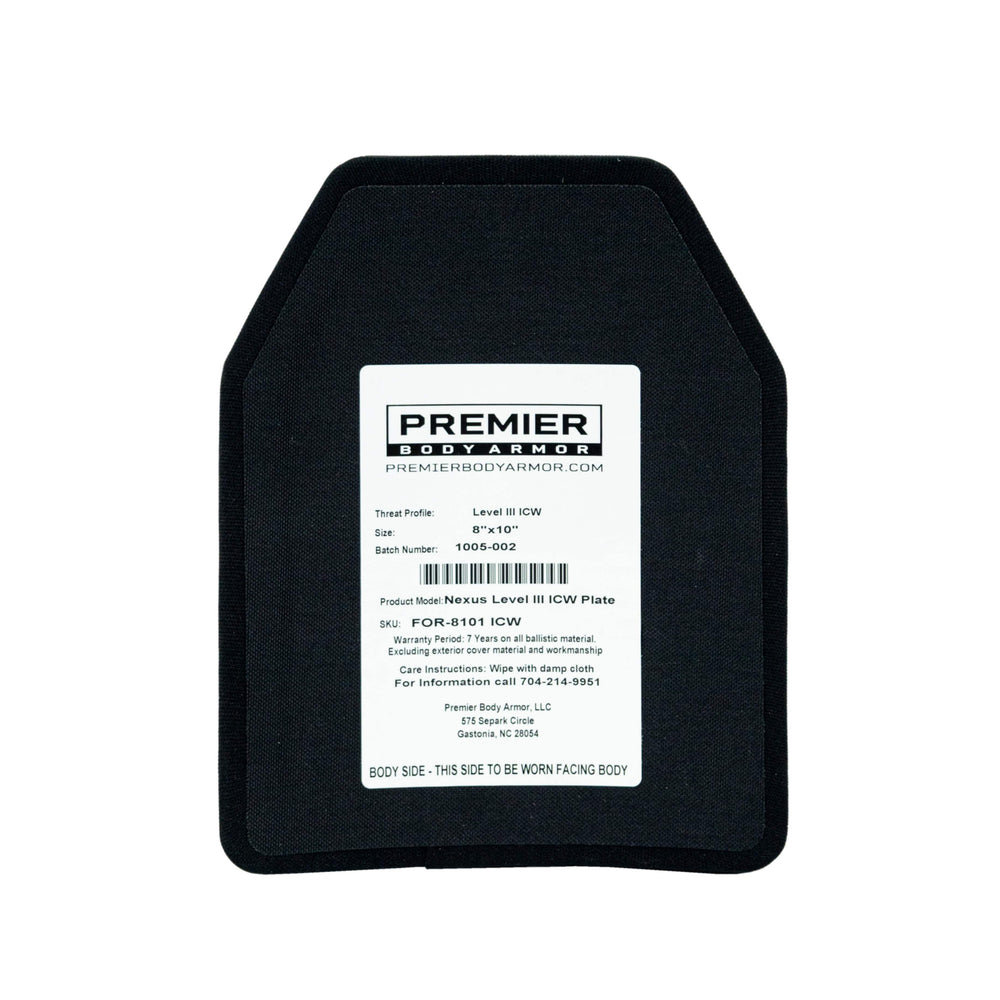
Level III+ Body Armor Enhanced Plates
Level 3 body armor is a type of ballistic plate armor that is designed to protect against a variety of rifle rounds. This armor is worn by law enforcement officers, military personnel, and anyone else who may be at risk of encountering higher-powered rifles in the line of duty. Level III body armor protects against a higher threat level than Level II armor and offers protection against rifle rounds [read more...]
What does Level III body armor stop?
Level 3 body armor is the first tier of bulletproof plate that protects against higher caliber rifle rounds, per NIJ standards. These rounds include the following:
- 7.62×39 123gr PS Ball (MSC)
- 7.62×51 147gr FMJ (M80) – up to 2850 ft/s
- 5.56x45 55gr (M193) up to 3150 ft/s*
*NOTE: This plate is not rated to stop M855 or armor piercing rifle rounds.

Differences between soft body armor and hard body armor:
When choosing between soft body armor and hard body armor, it is important to understand the key distinctions between the two.
Soft body armor is flexible and designed to stop handgun rounds. Hard body armor, on the other hand, is typically made from more rigid materials such as ceramic, steel or polyethylene, and rated to stop rifle rounds. Soft body armor is generally lighter and more concealable, while hard body armor is heavier and offers more stopping power.
With this distinction in mind, it is important to understand that you won't find Level 3 soft body armor. Anything considered ‘soft armor’ is typically rated Level 3A and below.
Differences between Level 3A, Level 3, and Level 3+ body armor:
The National Institute of Justice (NIJ) sets the standards for ballistic resistance in body armor. Level 3A and Level 3 are different levels of protection defined by the NIJ. Level 3+ body armor, on the other hand, is not an official designation, and varies depending on the manufacturer.
At Premier Body Armor, the “+” indicates we have tested the armor against ammunition that exceeds the Level 3 NIJ standard. For example, our Stratis Level 3+ plate has been tested against higher powered ammunition in addition to the rounds required for the NIJ rated Level 3 designation, thus earning a Level 3+ body armor rating.

Level 3A body armor provides protection against common handgun rounds up to .44 Magnum and is generally lighter than its higher rated counterparts. Level IIIA you'll find as soft body armor, with all other body armor rated Level 3 and up usually hard armor. You'd be hard pressed to find soft level 3 body armor. Level 3 body armor provides protection against high-powered rifle rounds. It is commonly used by law enforcement and military personnel.
It's important to note that the higher the level of protection, the heavier the armor will be. This is something to consider when selecting body armor for a specific use case.
Should I choose ceramic, steel, or polyethylene level 3 plates?
The choice between ceramic, steel, or polyethylene Level III armor depends on your specific needs and priorities. Consider these factors:
Weight of Level 3 Plates
Of the three, Level 3 ceramic plates are generally the heaviest, although depending on the manufacturer, Level 3 steel plates can be as heavy as ceramic plates. If keeping weight down is critical, polyethylene plates are the best option, as they are typically the lightest of the three.
Polyethylene has a low density lattice structure at a molecular level. This structure allows air to be trapped inside during the manufacturing process. This keeps weight down while still providing strength, durability, and maneuverability.
Performance of Level 3 Plates
Level 3 polyethylene, steel, and ceramic plates offer the same stopping power against ballistic threats. Steel plates are durable and affordable, but heavier. Ceramic plates are lightweight and do not spall, but are more brittle. Polyethylene plates are lightweight, have a low spalling risk, and can withstand multiple impacts.
Buyers should consider their needs and budget when choosing the right Level 3 body armor.
Most Comfortable Level 3 Plates
Level 3 polyethylene plates are typically the most comfortable plates for extended wear as they are the lightest. Premier Body Armor's Stratis Level 3+ plates are lightweight and Shooter's Cut for optimal performance.
What cut of Level 3 body armor should I get?
There are many different cuts of Level 3 body armor plates that cater to different scenarios. Traditionally, the military utilizes an ESAPI cut. ESAPI stands for Enhanced Small Arms Protective Insert and provides the most coverage.
The shooter’s cut on the other hand, is designed for those in active shooting scenarios. Shooter's armor usually has a sharper angle cut on the top corners. This increases arm mobility, particularly for those using rifles regularly.
The swimmers cut features even more drastic angular cuts than the shooters cut, and often features rounded bottom corners to aid mobility of the legs. You may also want to consider whether your plate of choice is single curve or multi curve, as this will also have an impact on the comfort level.
Backpack plates are another type of Level III plate, and feature a different cut than the shooter or ESAPI cuts. Backpack plates are typically longer and more rectangular. This provides a better fit when using the plate in a backpack. Typically, backpack plates will provide a greater area of coverage, though this means they can be heavier than a chest plate. Premier Body Armor also offers specialized bag inserts, including level 3A inserts for purses, briefcases, and more.
What plate carrier do I use with Level 3 armor plates?
When choosing a plate carrier for use with Level 3 armor plates, it is important to consider weight, attachment points, and material. These all play a role in the fit and functionality of each armor system.
Our Fortis Alpha plate carrier is another option for those looking to equip their personal protection arsenal with affordable yet high-quality products. The Fortis Alpha carrier is adjustable and lightweight, with maximum functionality and strength.
Our Discreet Plate Carrier is a minimalist carrier designed to carry Level 3 or Level 4 armor plates. Fitted with a cummerbund for easy magazine access, the Discreet Plate Carrier is an excellent option for those in search of an easily concealed plate carrier.
The Core Plate Carrier is another plate carrier offered by Premier Body Armor, and features a rugged, durable design and a reinforced drag handle. The Core Plate Carrier also features a Level 3A soft body armor cummerbund to ensure 360 degrees of protection.
Our Hybrid Tactical Vest is another great option for those in need of a plate carrier. While many plate carriers only hold plates, the Hybrid Tactical Vest is a Level 3A soft body armor vest with front and rear plate carrying capacity.
More information on finding the right plate carrier for you can be found at our Plate Carrier Collection.
Level 3 Body Armor FAQs
Can civilians own level 3 body armor plates?
Yes, civilians can own Level 3 body armor plates in most states in the U.S. However, some states have restrictions on the ownership and purchase of body armor, so it's important to check your local laws before buying.
How much does level 3 body armor weigh?
The weight of Level 3 body armor can vary depending on the specific type and brand. However, most non-polyethylene level 3 plates weigh between 6 and 8 pounds.
What level of armor do cops wear?
Police officers typically wear Level 3A soft armor in their vests, which is designed to protect against handguns and other low-velocity threats. Some officers may opt to wear Level 3 or higher armor in certain situations.
Can an AR-15 penetrate a level 3 ballistic plate?
With body armor, it’s all about velocity. Barrel length can also play a role. Standard Level III plates were never designed to stop 5.56x45 and may struggle with some AR-15 rounds.
Polyethylene plates that are beefed up (like our Stratis III+ line) are specifically designed to stop 55 grain 5.56x45, commonly referred to as M193 and all 223, but will not stop 62 grain 5.56x45, commonly referred to as M855. Steel level III plates, on the other hand, will generally stop M855 and not M193.
In other words, if stopping ALL rounds from the AR-15 is your primary concern, you may want to err on the side of caution and go with Level IV plates.
Can an AK-47 pierce a level 3 plate?
No, most Level 3 ballistic plates are designed to stop rifle rounds, including the 7.62x39mm rounds fired by an AK-47. All level 3 plates will stop all 7.62x39 rounds. Level III+ plates are designed to stop 7.62x39mm PS ball (MSC - Mild Steel Core).
Is level 3 body armor concealable?
Level 3 body armor is typically not easily concealable, as it requires plates to provide adequate protection against rifle rounds. However, some plate carriers, such as our Discreet Plate Carrier, are designed to be more low-profile and less bulky.

Do bullets still hurt with armor class 3 plates?
While Level 3 rifle-rated plates are designed to stop bullets and prevent serious injury, the impact can still be jarring and cause discomfort or bruising. It's also important to note that no rifle-rated body armor can provide 100% protection against all threats.
How long do Level 3 plates last?
The lifespan of Level 3 plates can vary depending on the specific type and brand, as well as how often they are used and how well they are maintained. However, most Level 3 plates are designed to last for several years with proper care.
Are Level 3 plates stab proof or knife resistant?
Level 3 plates are not designed to be stab proof or knife resistant. They are designed to stop bullets and other ballistic threats, not sharp objects. While they may fare better than no armor at all, it is recommended that those looking for protection against stabbing or slashing attacks consider stab-resistant armor.
frequently asked questions
We will sell body armor to civilians, Law Enforcement Officers, and Military Personnel in the United States who meet the following criteria:
1. Are 18 years of age or older
2. Are not a felon;
3. Are legally allowed to possess and use the item(s) in your state (If you are a New York or Connecticut resident, you must be active Law Enforcement or Military Personnel and provide necessary credentials);
4. Are purchasing this product for only lawful purposes;
5. Are purchasing this product on your own behalf;
6. Comply with all other Terms & Conditions.
Learn more about the legality of body armor in each state.
STRATIS Plates have an 8-year warranty. Fortis plates have a 7-year warranty. Soft body armor panels (for vests and backpacks) have a 5-year warranty, and each carrier has a 2-year warranty.
For warranties on specific products, please see the product page.
All products (excluding clearance items) are eligible for an easy return or exchange if initiated within 30 days of receipt, and the product(s) is in new, unused condition.
There is no re-stocking fee for returns or exchanges. The customer is responsible for any return shipping costs associated with returning the product.
Read more about our returns & exchange information.




































